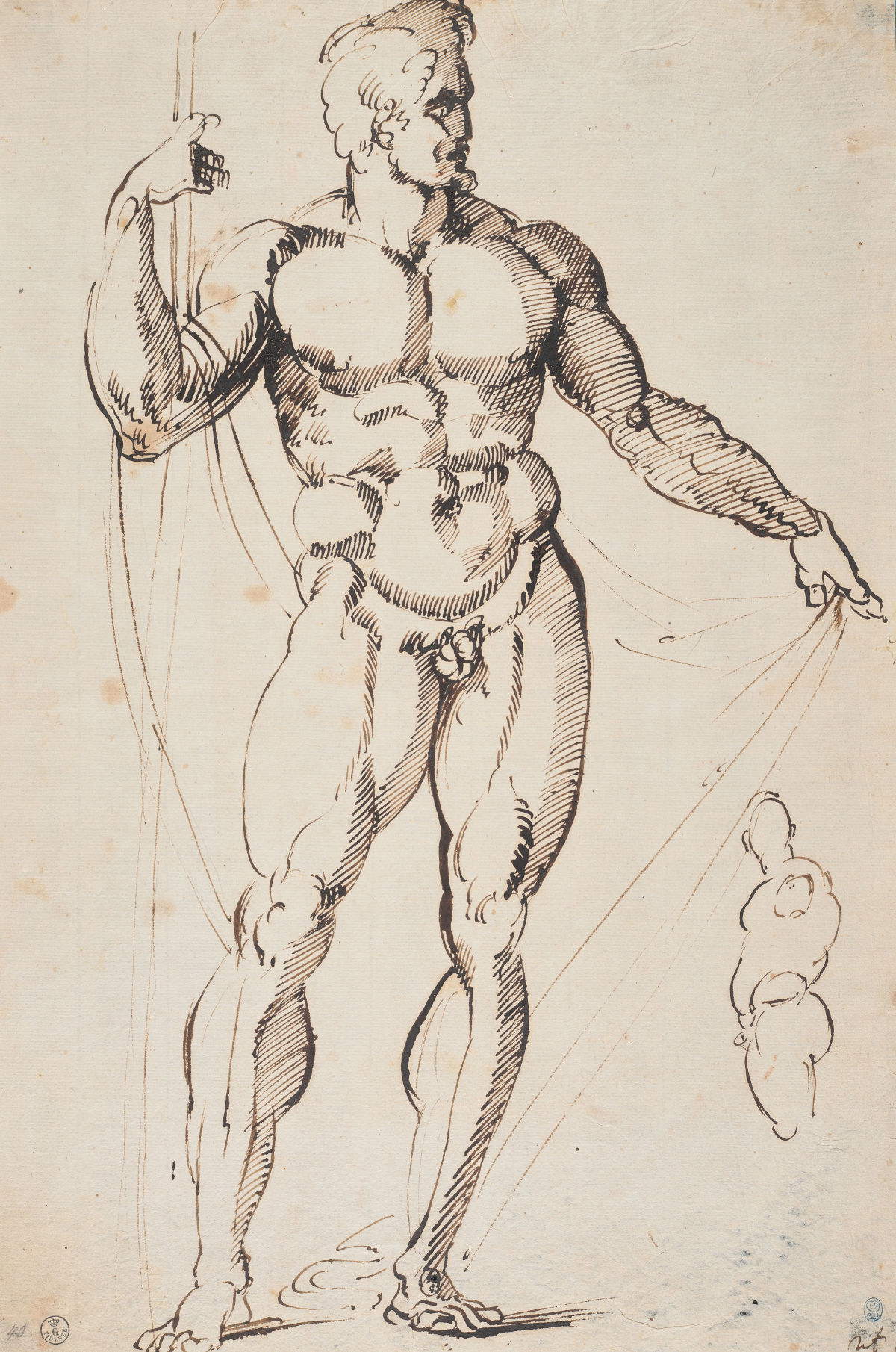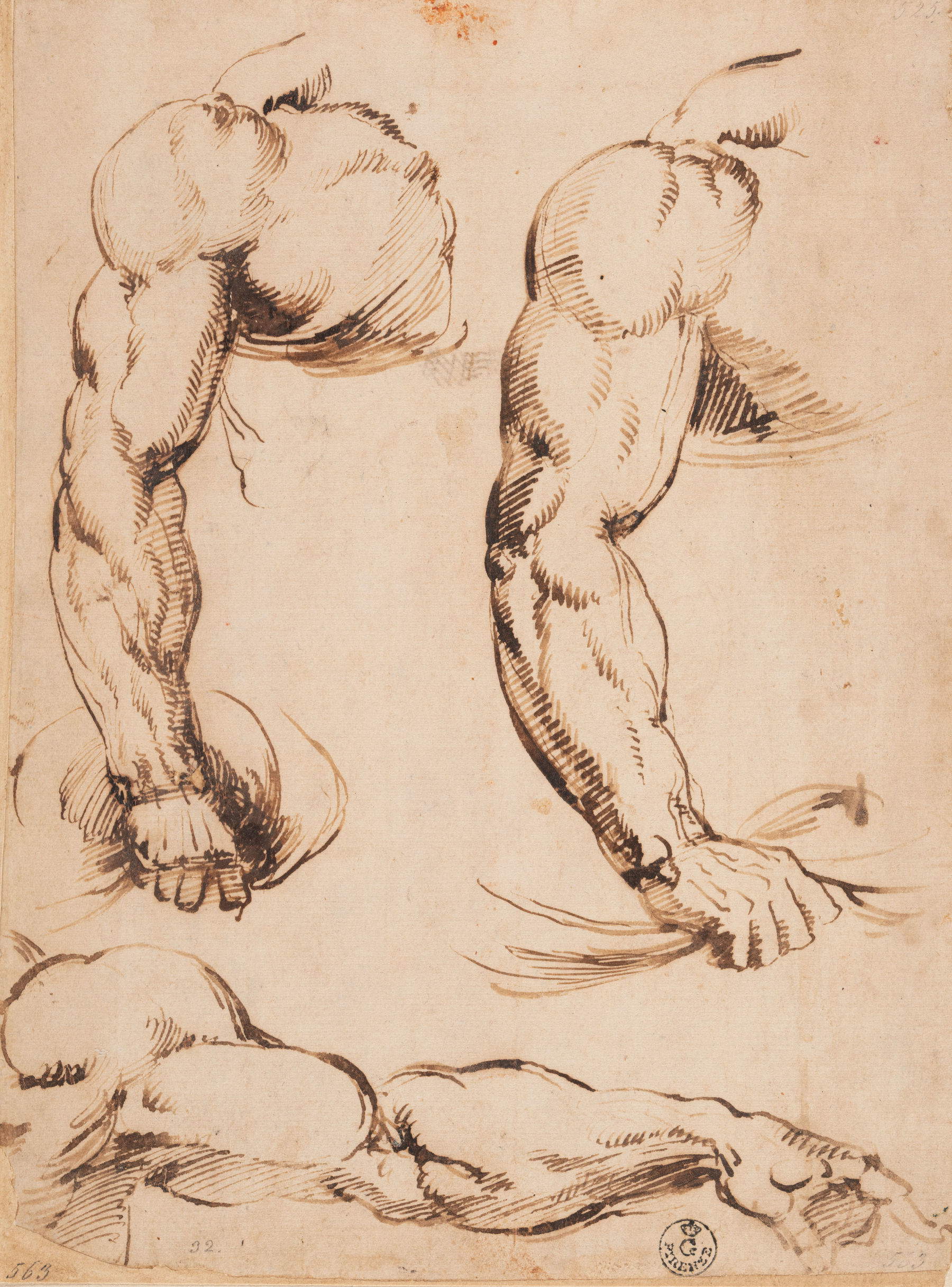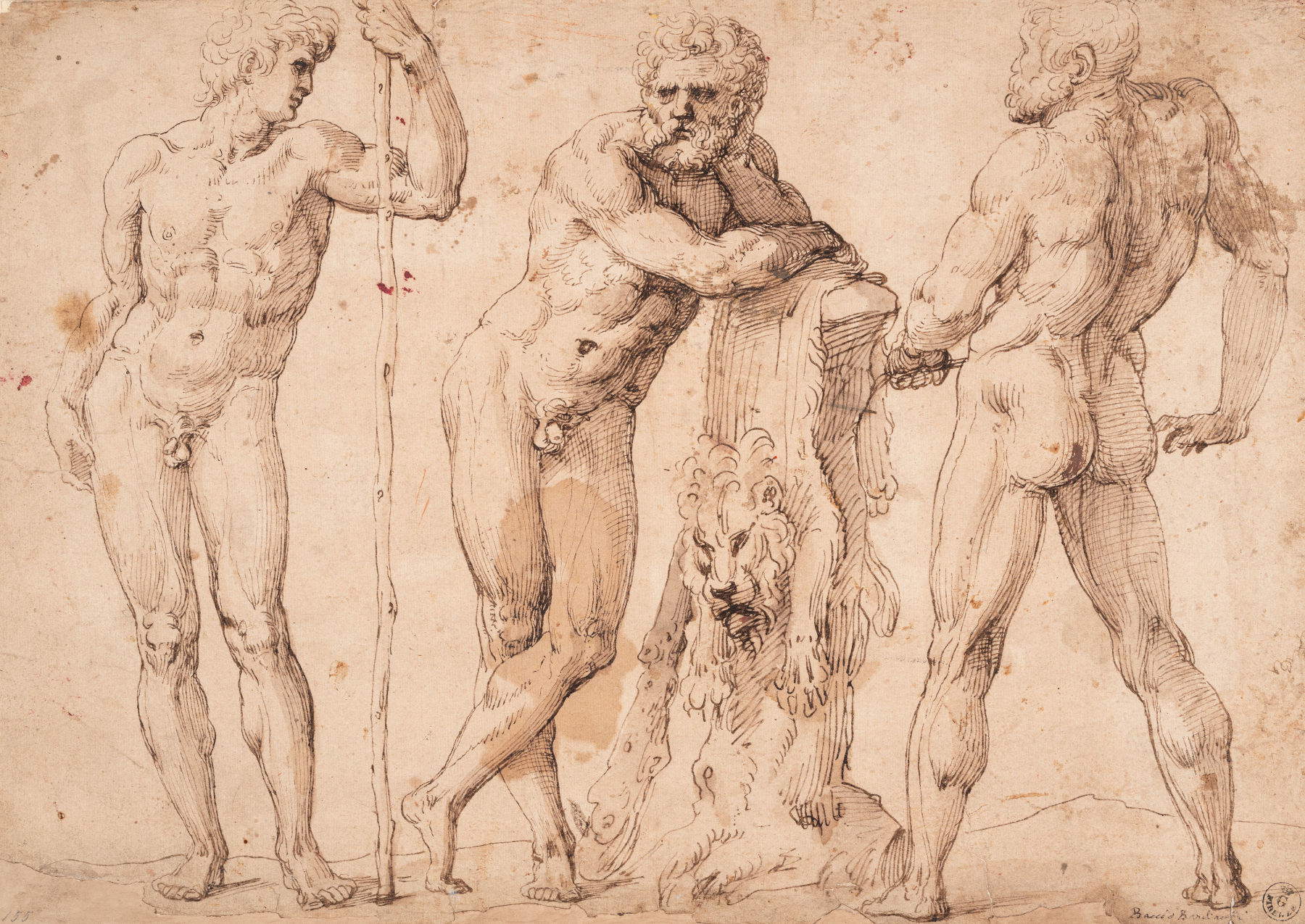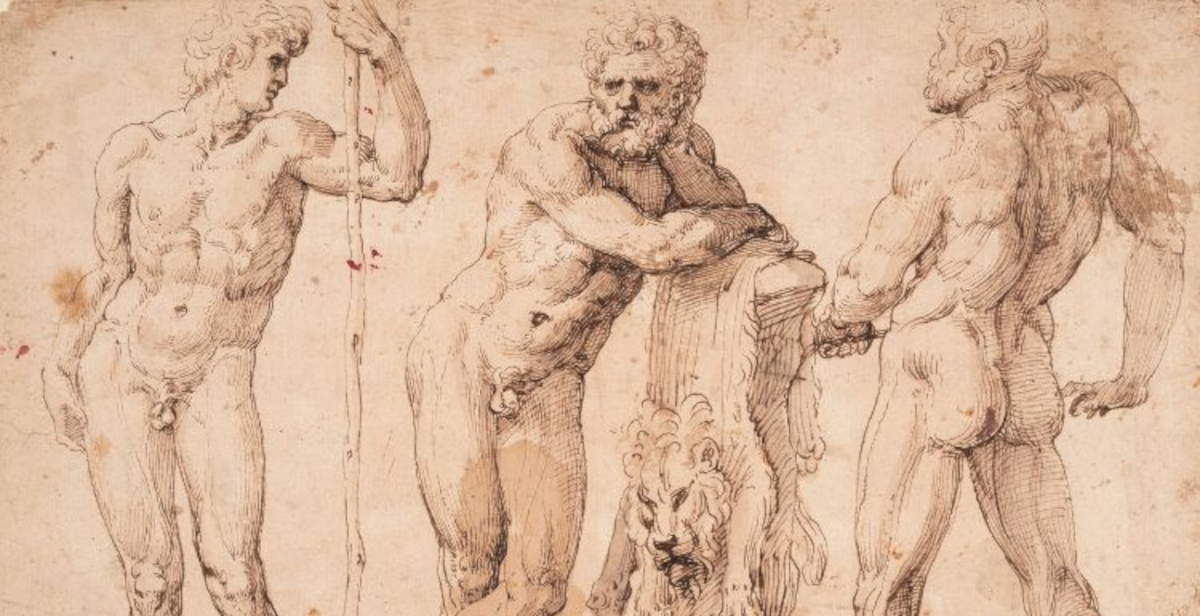From 16th-century Florence to 1980s Japan, from the anatomical models of the Renaissance to the post-apocalyptic warriors of a cult manga: the link between distant eras finds a new declination at Lucca Comics & Games. Bridging the gap between two seemingly distant worlds are the Uffizi Galleries, which has loaned three drawings by Baccio Bandinelli (Florence, 1493 - 1560) and his school for the opening of the exhibition Tetsuo Hara: Like Lightning from Heaven, the first exhibition of originals by the Japanese artist outside his country. The exhibition, curated by Alessandro Apreda, will be hosted from Oct. 25 to Nov. 2 inside theformer Chiesa dei Servi in Lucca’s historic center during the Lucca Comics & Games festival.
The Uffizi’s intervention takes on a special value in the context of an event that for years has united different artistic languages and cultures. The three Renaissance sheets, granted exceptionally for the exhibition, represent an unprecedented point of contact between 16th-century academic art and the heroic imagery of contemporary illustration. They are Male Figure, Studies of Arms and Three Male Figures, works that testify to Bandinelli and his students’ attention to the plastic construction of the human body and the exaltation of physical strength as an expression of inner tension.
“The aesthetic exaltation of bodily physicality and the virtuosity in reproducing muscular tension are traits that mark a universal constant in the history of art,” argues Uffizi Galleries director Simone Verde. “Proof of this is their overbearing re-emergence even in contemporary manga. In fact, it is precisely within this exhibition that the ancient canon dialogues plastically with the creativity of the present through the Uffizi’s splendid triptych of sixteenth-century drawings: a testimony of expressive continuity across centuries and millennia that perhaps, on reflection, constitutes one of the most profound reasons for art itself.”
Baccio Bandinelli was among the protagonists of the Florentine Mannerist season, best known for the monumental marble group of the Laocoon that still concludes the Third Corridor of the Gallery of Statues and Paintings at the Uffizi. His obsession with anatomy and the sculptural rendering of bodies led him to produce studies of great intensity, in which the male musculature becomes a terrain for technical and symbolic exploration. It is precisely these traits, the physical power, dynamism, and drama of gesture, that find a striking echo in the drawings and plates of Tetsuo Hara, who in the characters of Ken the Warrior translates Renaissance monumentality into a modern, apocalyptic key.



The presence of the three Florentine drawings within the exhibition thus takes on a conceptual opening function. As had already happened last year, when Lucca Comics & Games had inaugurated the exhibition dedicated to the fiftieth anniversary of the birth of Dungeons & Dragons with a selection of works from the Uffizi, also on this occasion the Florentine museum renews its dialogue with contemporary pop culture. An operation that is part of a broader strategy of opening up to new audiences and visual languages, in which the museum institution confronts the imagery of modernity without renouncing its historical identity.
The three drawings by Bandinelli and his school will be placed in a specially prepared introductory area, conceived as a symbolic threshold between two visions of the body: the mythical and idealized one of the Renaissance and the epic and disenchanted one of manga. The exhibition will invite the audience to observe the affinities in the representation of human strength, suffering and endurance. If for Bandinelli the classical hero embodied the spiritual tension of the artist and the power of form, for Hara the lone warrior of a war-torn world is a reflection of a humanity struggling against its own destruction. The decision to include sixteenth-century works in an event dedicated to comics and illustration underscores the increasingly hybrid role of Lucca Comics & Games, which over the years has become a meeting point between visual arts, literature and digital culture. In this perspective, the exhibition on Tetsuo Hara offers an opportunity for a broader reflection on the aesthetic models that run through the history of the image, from academic drawing to manga, from fresco to ink plates.
 |
| The Uffizi at Lucca Comics: renaissance wrestlers alongside Ken the Warrior |
Warning: the translation into English of the original Italian article was created using automatic tools. We undertake to review all articles, but we do not guarantee the total absence of inaccuracies in the translation due to the program. You can find the original by clicking on the ITA button. If you find any mistake,please contact us.